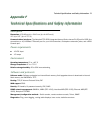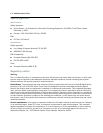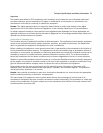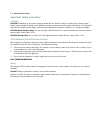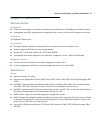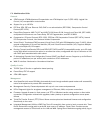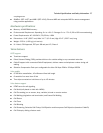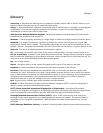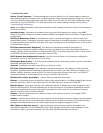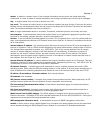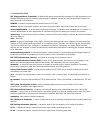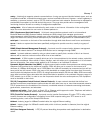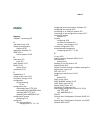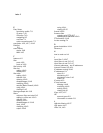Glossary 1
GG
GG
ll
ll
oo
oo
ss
ss
ss
ss
aa
aa
rr
rr
yy
yy
access line: A telephone line reaching from the telephone company central office to a point usually on your
premises. Beyond this point the wire is considered inside wiring.
analog: In telecommunications, telephone transmission and/or switching that is not digital. An analog phone
transmission is one that was originally intended to carry speech or voice, but may with appropriate
modifications be used to carry data of other types.
ANSI (American National Standards Institute): Devises and proposes recommendations for international
communications standards. See also CCITT.
backbone: A network topology consisting of a single length of cable with multiple network connection points.
bandwidth: The range of frequencies, expressed in Kilobits per second, that can pass over a given data
transmission channel within a network. The bandwidth determines the rate at which information can be sent
through a channel - the greater the bandwidth, the more information that can be sent in a given amount of time.
baud rate: The rate of the signaling speed of a transmission medium.
bit: A binary digit; the smallest unit of data in the binary counting system. A bit has a value of either 0 or 1.
bits per second (bps): A measure of the actual data transmission rate. The bps rate may be equal to or greater
than the baud rate, depending on the modulation technique used to encode bits into each baud interval. The
correct term to use when describing modem data transfer speeds.
bps: See bits per second.
branch: A length of cable in a star network that goes from the center of the star to a wall jack.
broadcast: A network transaction that sends data to all hosts connected to the network.
burstiness: Data that uses bandwidth only sporadically; that is, information that does not use the total
bandwidth of a circuit 100 percent of the time. During pauses, channels are idle, and no traffic flows across
them in either direction. Interactive and LAN-to-LAN data is bursty in nature, because it is sent intermittently,
and between data transmissions the channel experiences idle time waiting for the DTEs to respond to
transmitted data user’s input and waiting for the user to send more data.
byte: A group of bits, normally eight, which represent one data character.
CallerID: A feature that allows the called customer premises equipment (CPE) to receive a calling party’s
directory number during the call establishment phase.
CCITT (Comite Consultatif International Telegraphique et Telephonique): International Consultative
Committee for Telegraphy and Telephony, a standards organization that devises and proposes recommenda-
tions for international communications. See also ANSI (American National Standards Institute).
Challenge Handshake Authentication Protocol (CHAP): A form of PPP authentication that requires an
exchange of user names and secrets (encrypted passwords) between two devices. This security feature is
supported on lines using PPP encapsulation. CHAP passwords are called secrets because they are sent
encrypted.
CHAP (Challenge Handshake Protocol): A method for ensuring secure network access and communications.



